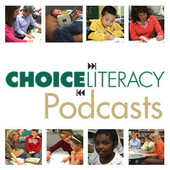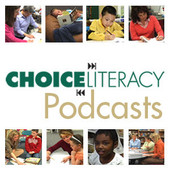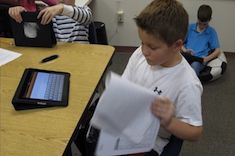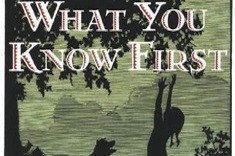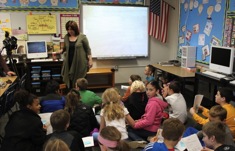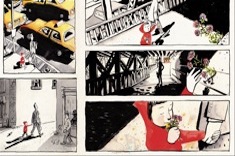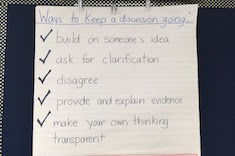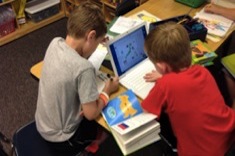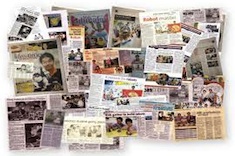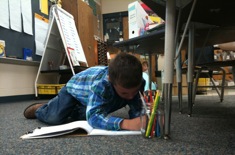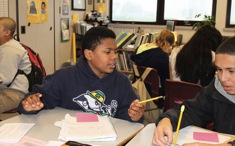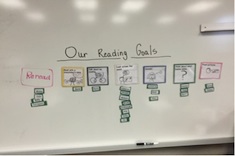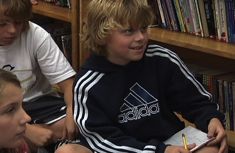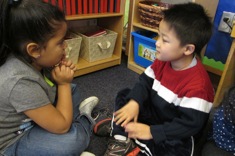Articles
Here is where you’ll find all the latest print features from our contributors. If you’d like to browse specifically by grade level, topic, or contributor, you can use the links in the right sidebar.
Latest Content
We Are All Writers with Louise Borden (PODCAST)
In this podcast, author Louise Borden talks about writing from a historical viewpoint.
Wonder in Classrooms with Georgia Heard (PODCAST)
In this podcast, Georgia Heard not only recognizes natural curiosity in children, but sees how teachers can model to encourage that curiosity to grow.
Ralph Fletcher on Mentor Texts (PODCAST)
If you’re spending some time sifting through new books and thinking about teaching with them, you’ll enjoy this podcast with Ralph Fletcher.
Cris Tovani on Reading Workshops with High School Students (PODCAST)
Cris Tovani chats about the challenges and joys of a workshop model for teaching reading in high schools.
Donalyn Miller on Modeling Literate Lives (PODCAST)
Donalyn Miller, author of the acclaimed bestseller The Book Whisperer, chats with Franki Sibberson about the importance of teachers modeling their literate lives for students.
Guess Who’s Coming to Dinner?
Gretchen Schroeder finds the classic dinner party assignment is a fun way for her high school students to explore kindred spirits in literature late in the school year.
The Power of Charts in the Classroom
Melanie Swider shares suggestions for making anchor charts more purposeful.
Note Taking for Research
Katherine Sokolowski helps her fifth graders build notetaking skills for research.
Student-Created Text Sets
Jillian Heise’s middle school students design text sets late in the school year. It’s a great activity for discovering how they have grown as readers, as well as a gift to next year’s class.
Choices for Paragraphs
Melanie Meehan finds third grade is a good age for helping students develop paragraphing skills.
Closing Out the Year with “Where I’m From”
Jillian Heise shares a marvelous poetry writing activity for students who are transitioning from elementary to middle school, or middle to high school.
Closing the Year and Making Space to Remember
Jan Burkins and Kim Yaris explain how ending the year is all about making space for memories, and provide some texts to help in the process.
Video for Last Days of School
Melanie Meehan encourages teachers to build a video collection of students at work to use with next year’s class.
Best Part of Me
Jennifer Schwanke shares a favorite activity for building community and self-esteem.
A Spring Villanelle
Shirl McPhillips highlights the pleasures and challenges of using a strict poetic form.
Favorite Wordless Picture Books for Teaching Inference
Jan Burkins and Kim Yaris present some of their favorite children’s books for teaching inference.
Working Hard and Reading Carefully: On Theme and Rereading
Jennifer Allen uses commercials to promote the importance of rereading to students while teaching theme.
Redefining Just-Right Books
Jan Burkins and Kim Yaris share advice for rethinking how teachers and students define “just-right” texts.
Supporting Readers with Nonfiction Text
Cathy Mere finds that criteria for “just-rightness” varies with genre.
Using Picture Books to Foster Resilience
Gigi McAllister uses picture books to strengthen her fourth-grade classroom community.
Celebrating “The Voice” of Writers
Melanie Meehan presents a fun activity for late in the school year that uses the format of The Voice television series.
Using Padlet with Students
Katherine Sokolowski finds Padlet is a great tool for compiling learning and building community.
Space to Draft
Ruth Ayres argues against lockstep approaches to the writing process.
Group Composing
Gretchen Schroeder finds group composing is a fun way to build community, writing skills, and understanding of how arguments work with her high school students.
Tutoring Carl: Sketching to Draft
Max Brand challenges himself to let a student take more of the lead during a writing tutoring session.
Setting Goals with Students
Melanie Meehan shares anchor charts and strategies for goal-setting.
Student Learning Targets
Christy Rush-Levine finds she has to rethink learning targets for her middle school students if she wants students to pursue complex and lifelong reading goals.
Rethinking Reading Goals
Maria Caplin develops a system for helping students move beyond simple goals like noting the number of pages read.
How to Speak “Friend”
Melissa Kolb shares some of her favorite mentor texts for helping preschoolers understand friendship.
Book Blurbs in the Middle School Classroom
Jillian Heise uses the quirky genre of book blurbs in her middle school classroom to model summaries and glean information about students’ comprehension, reading interests, and writing skills.
Browse Content By
Type
Category
- Assessment Tools
- Big Fresh Archives
- Booklists
- Choice Numeracy
- Classroom Design
- Common Core
- Community Building
- Conferring
- Content Literacy
- Digital Literacy
- English Language Learners
- Equity
- Family Relations
- Free Samples
- Guiding Groups
- Leadership
- Literacy Coaches
- Mentor Texts
- Minilessons
- New Teacher Mentors
- Podcasts
- Poetry
- Quote Collections
- Reading Strategies
- Self Care
- Struggling and Striving Learners
- Talking and Listening
- Teacher Study Groups
- Teaching Reading
- Teaching Writing
- Word Study and Vocabulary
Author
- Melissa Quimby
- Nawal Qarooni
- Gwen Blumberg
- Julie Cox
- The Lead Learners
- Hannah Tills
- Josie Stewart
- Ruth Metcalfe
- Mallory Messenger
- Becca Burk
- Jodie Bailey
- Vivian Chen
- Mary Brower
- Tiffany Abbott Fuller
- Stephanie Affinito
- Ruth Ayres
- Leigh Anne Eck
- Heather Fisher
- Shari Frost
- Julie Johnson
- Suzy Kaback
- Gigi McAllister
- Shirl McPhillips
- Melanie Meehan
- Cathy Mere
- Debbie Miller
- Tara Barnett and Kate Mills
- Tammy Mulligan
- Dana Murphy
- Bitsy Parks
- David Pittman
- Brenda Power
- Heather Rader
- Matt Renwick
- Mandy Robek
- Christy Rush-Levine
- Gretchen Schroeder
- Jen Schwanke
- Brian Sepe
- Katherine Sokolowski
- Stella Villalba
- Jennifer Vincent
Grade Level
Choice Literacy Membership
Articles
Get full access to all Choice Literacy article content
Videos
Get full access to all Choice Literacy video content
Courses
Access Choice Literacy course curriculum and training



